 Captain Pugwash Article - Puffin Annual No.1 (1974)
In Puffin Annual No.1 John Ryan was interviewed and he gave an insight into what happened
behind the scenes. The interview and the pictures are shown here.
© Penguin Books Ltd & John Ryan
Captain Pugwash Rides The Waves
John Ryan, creator of Captain Pugwash and
Sir Prancelot tells us how his stories are made
into films for the television screen.
If you think that I make cartoon programmes in the
same way as Walt Disney cartoons, you're wrong.
These kind of films are made by what is known as
'stop-frame' animation, and are very expensive and
take a long time and a lot of people. The illusion of
movement is given by showing twenty-five different
pictures every second and very large numbers of artists and technicians are involved. My method
is far simpler. Most of the work is done by three of us in my studio; and, although in terms of
movement the result may be less convincing, it is a much cheaper and quicker way of telling
stories on the television screen, and it seems to work.
This is how we do it: To begin with, each Pugwash
film has to have a story outline, known as the ‘script’:
and, of course, before I write the story I have to have
an idea. Sometimes I wake up with one, sometimes I
sit for hours thinking. And sometimes I just draw a
scene - a wild tropical jungle for example - and then try
to imagine what might happen to my characters in such
a place. I first invented Captain Pugwash over twenty
years ago, so by now I usually find it easy to work out
how and his friends and enemies will behave in
different situations.
Once the script is written, we start making the pictures. We call these ‘captions’. We need about
fifty of them for a five-minute film. First we make the characters like flat puppets. They are cut out
of card and laid on painted backgrounds. Then they are moved by cardboard levers and the whole
caption is put together with tiny brass paperclips and glue and sticky paper. We use different
coloured card and paper to save having to paint everything. I do most of the drawing, Sara Cole
adds colour to the figures and backgrounds, and Hazel Martingell cuts them out, puts them
together and makes them work. We have to work fast: it takes us a fortnight to make the captions
for one film.
Almost as important as the pictures is the sound. At the
recording studio we meet Peter Hawkins, the actor
whose ability to speak with any number of different
voices is truly amazing. Peter tells the story and speaks
the parts of all the characters into the microphone, and
it's very hard to keep a straight face as he does it
because he has a way of miming the action as well!
Then we make the sound effects, clashing table knives
for a sword fight, for example, and choose other
noises, such as explosions, from the record library. The
music is specially composed and played by Johnny
Pearson for the Pugwash series. Finally my editor
Barry Shephard mixes voices, sound effects and music onto a 16 millimetre magnetic sound track.
And he times it, so that it lasts exactly five minutes.
When we have completed the sound track and the captions (incidentally fifty of them mounted on
thick card make quite a heavy load) we set off for a small film studio in North London which
specialises in puppet animation. It is an exciting house filled with miniature film sets and puppets
of every description. Usually the experts, Bob Burn and John Hardwick, produce 'stop-frame'
animation but for Pugwash they provide lighting and a 16 millimetre camera so that we can film
our pictures at work just as actors are filmed in the making of a full-scale film.
The illustration below was actually taken with different helpers because we were making the 'Sir
Prancelot' series, but it shows how the captions are set up, with all of us gathered round the easel.
Each of us has a job to do in the animation of the
picture. Priscilla, my wife, usually looks after the levers
which control the mouth movements. Hazel operates
the tape recorder and keeps a careful log of the filming.
Thus if the first picture shows Captain Pugwash saying
'Full speed ahead, me hearties' we listen to the tape
several times while Priscilla practices the mouth
movements, Sara works the Captain's eyes and I look
after the arms and make them point in the right
direction at the right time. When we all know what to do
we film that little bit of the story. If something goes
wrong the first time we shoot it again.
We go right through the whole story, filming each scene in order and keeping a careful note of
what has happened. At the end of the day we have probably used up about 400 feet of film and
have the whole story 'in the can'. This goes off to the laboratory to be processed and comes back
two days later in the form of a colour negative (which is precious and must not be touched), and
rough prints in black and white which are known as 'rushes'.
We look at these on a screen to see if anything has gone wrong, and we retake anything that has.
For example, we have to make sure that the camera has only taken the picture itself and hasn't
'shot off to reveal the levers and even the hands of the people working them. In the colour
illustrations on the previous pages you can see the difference between the picture as you will see
it on your TV screen and the whole caption with the working parts round the edge. You will notice
too that some pictures are different shapes, some long and some larger than others. This is so
that John Hardwick our cameraman can zoom in and out on some scenes or move about over the
picture if needed.
The final stage is the editing and this takes me back to Barry (who helped to make the sound-
track in the first place). He has a special machine which enables us to play the sound on the one
side and see the picture on a miniature screen on the other. 'Editing' means choosing the best film
sequences, and cutting them into lengths so that they fit exactly to the sound-track. When all the
bits have been joined together we have what is known as a 'rough-cut' film, in black and white
which is good enough to examine and decide on any changes which might be necessary. And
when the film is finally approved in this form, the negative is cut and joined to match it and the
laboratories produce the colour print. And this is the film which, with the sound track, goes to the
BBC and will eventually be transmitted onto your television screen.
All of this may sound like a very long operation just to produce one five-minute film, but in fact it is
far quicker than other methods of animation. Even so, it will take us about ninety weeks to make
the whole series of thirty, five-minute stories. As I am writing this I have completed fourteen of my
new series. I haven't the faintest idea what the next sixteen adventures will be about, but with luck
and a certain amount of hard thinking the ideas will come. Then they will be shown on television.
We start off with nothing more than a few sheets of coloured card, watercolour paints, glue and
brass paper-clips. Three weeks later, with the help of all the skilful people I have mentioned, we
have a film. It's all a lot of fun, and if I can entertain you all and at the same time make a living out
of it I'm very happy.
Captain Pugwash Article - Puffin Annual No.1 (1974)
In Puffin Annual No.1 John Ryan was interviewed and he gave an insight into what happened
behind the scenes. The interview and the pictures are shown here.
© Penguin Books Ltd & John Ryan
Captain Pugwash Rides The Waves
John Ryan, creator of Captain Pugwash and
Sir Prancelot tells us how his stories are made
into films for the television screen.
If you think that I make cartoon programmes in the
same way as Walt Disney cartoons, you're wrong.
These kind of films are made by what is known as
'stop-frame' animation, and are very expensive and
take a long time and a lot of people. The illusion of
movement is given by showing twenty-five different
pictures every second and very large numbers of artists and technicians are involved. My method
is far simpler. Most of the work is done by three of us in my studio; and, although in terms of
movement the result may be less convincing, it is a much cheaper and quicker way of telling
stories on the television screen, and it seems to work.
This is how we do it: To begin with, each Pugwash
film has to have a story outline, known as the ‘script’:
and, of course, before I write the story I have to have
an idea. Sometimes I wake up with one, sometimes I
sit for hours thinking. And sometimes I just draw a
scene - a wild tropical jungle for example - and then try
to imagine what might happen to my characters in such
a place. I first invented Captain Pugwash over twenty
years ago, so by now I usually find it easy to work out
how and his friends and enemies will behave in
different situations.
Once the script is written, we start making the pictures. We call these ‘captions’. We need about
fifty of them for a five-minute film. First we make the characters like flat puppets. They are cut out
of card and laid on painted backgrounds. Then they are moved by cardboard levers and the whole
caption is put together with tiny brass paperclips and glue and sticky paper. We use different
coloured card and paper to save having to paint everything. I do most of the drawing, Sara Cole
adds colour to the figures and backgrounds, and Hazel Martingell cuts them out, puts them
together and makes them work. We have to work fast: it takes us a fortnight to make the captions
for one film.
Almost as important as the pictures is the sound. At the
recording studio we meet Peter Hawkins, the actor
whose ability to speak with any number of different
voices is truly amazing. Peter tells the story and speaks
the parts of all the characters into the microphone, and
it's very hard to keep a straight face as he does it
because he has a way of miming the action as well!
Then we make the sound effects, clashing table knives
for a sword fight, for example, and choose other
noises, such as explosions, from the record library. The
music is specially composed and played by Johnny
Pearson for the Pugwash series. Finally my editor
Barry Shephard mixes voices, sound effects and music onto a 16 millimetre magnetic sound track.
And he times it, so that it lasts exactly five minutes.
When we have completed the sound track and the captions (incidentally fifty of them mounted on
thick card make quite a heavy load) we set off for a small film studio in North London which
specialises in puppet animation. It is an exciting house filled with miniature film sets and puppets
of every description. Usually the experts, Bob Burn and John Hardwick, produce 'stop-frame'
animation but for Pugwash they provide lighting and a 16 millimetre camera so that we can film
our pictures at work just as actors are filmed in the making of a full-scale film.
The illustration below was actually taken with different helpers because we were making the 'Sir
Prancelot' series, but it shows how the captions are set up, with all of us gathered round the easel.
Each of us has a job to do in the animation of the
picture. Priscilla, my wife, usually looks after the levers
which control the mouth movements. Hazel operates
the tape recorder and keeps a careful log of the filming.
Thus if the first picture shows Captain Pugwash saying
'Full speed ahead, me hearties' we listen to the tape
several times while Priscilla practices the mouth
movements, Sara works the Captain's eyes and I look
after the arms and make them point in the right
direction at the right time. When we all know what to do
we film that little bit of the story. If something goes
wrong the first time we shoot it again.
We go right through the whole story, filming each scene in order and keeping a careful note of
what has happened. At the end of the day we have probably used up about 400 feet of film and
have the whole story 'in the can'. This goes off to the laboratory to be processed and comes back
two days later in the form of a colour negative (which is precious and must not be touched), and
rough prints in black and white which are known as 'rushes'.
We look at these on a screen to see if anything has gone wrong, and we retake anything that has.
For example, we have to make sure that the camera has only taken the picture itself and hasn't
'shot off to reveal the levers and even the hands of the people working them. In the colour
illustrations on the previous pages you can see the difference between the picture as you will see
it on your TV screen and the whole caption with the working parts round the edge. You will notice
too that some pictures are different shapes, some long and some larger than others. This is so
that John Hardwick our cameraman can zoom in and out on some scenes or move about over the
picture if needed.
The final stage is the editing and this takes me back to Barry (who helped to make the sound-
track in the first place). He has a special machine which enables us to play the sound on the one
side and see the picture on a miniature screen on the other. 'Editing' means choosing the best film
sequences, and cutting them into lengths so that they fit exactly to the sound-track. When all the
bits have been joined together we have what is known as a 'rough-cut' film, in black and white
which is good enough to examine and decide on any changes which might be necessary. And
when the film is finally approved in this form, the negative is cut and joined to match it and the
laboratories produce the colour print. And this is the film which, with the sound track, goes to the
BBC and will eventually be transmitted onto your television screen.
All of this may sound like a very long operation just to produce one five-minute film, but in fact it is
far quicker than other methods of animation. Even so, it will take us about ninety weeks to make
the whole series of thirty, five-minute stories. As I am writing this I have completed fourteen of my
new series. I haven't the faintest idea what the next sixteen adventures will be about, but with luck
and a certain amount of hard thinking the ideas will come. Then they will be shown on television.
We start off with nothing more than a few sheets of coloured card, watercolour paints, glue and
brass paper-clips. Three weeks later, with the help of all the skilful people I have mentioned, we
have a film. It's all a lot of fun, and if I can entertain you all and at the same time make a living out
of it I'm very happy.


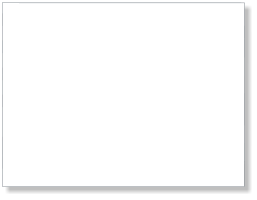 The Black Pig in port
The Black Pig in port

 Quayside: Captain Pugwash boards his ship
Quayside: Captain Pugwash boards his ship

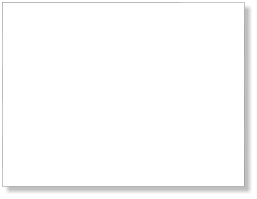

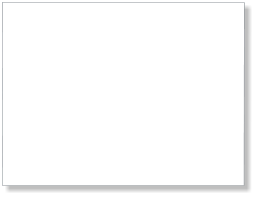 The Mate, anxious
The Mate, anxious

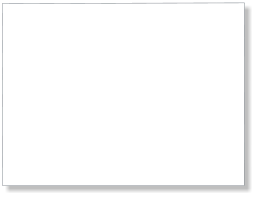 Pirates in conference
Pirates in conference

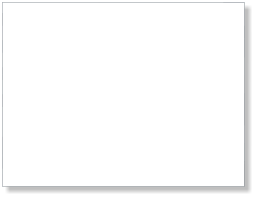 Cannon Practice
Cannon Practice

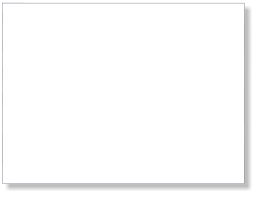 Preparing for action
Preparing for action

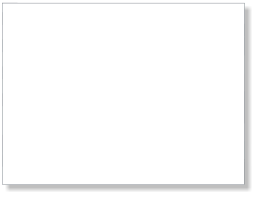 Cut-throat Jake comes ashore
Cut-throat Jake comes ashore

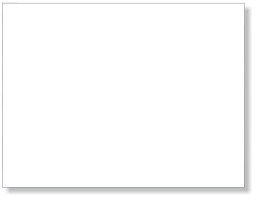 Treasure!
Treasure!

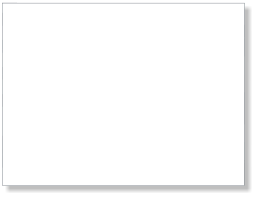 “Help! It’s Cut-throat Jake!”
“Help! It’s Cut-throat Jake!”

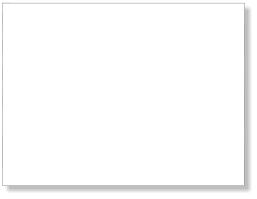 Jake and his crew with a fit of the sneezes
Jake and his crew with a fit of the sneezes

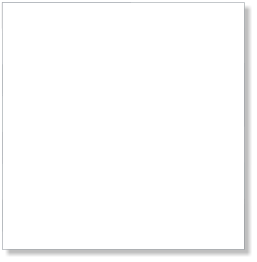 Pugwash and Tom in the dinghy
Pugwash and Tom in the dinghy

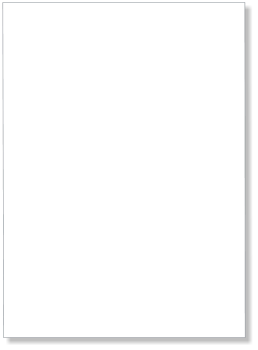 Pugwash and the Sea-monster
This shows how the levers operate:
‘A’ pulls the sea through to give forward
movement.
‘B’ opens the monster’s eye,
‘C’ the monster’s mouth,
‘D’ shudders Pugwash and
‘E’ moves the whole caption up and down to
give extra movement.
Pugwash and the Sea-monster
This shows how the levers operate:
‘A’ pulls the sea through to give forward
movement.
‘B’ opens the monster’s eye,
‘C’ the monster’s mouth,
‘D’ shudders Pugwash and
‘E’ moves the whole caption up and down to
give extra movement.

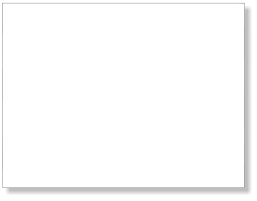 The pirates have a party
The pirates have a party

 The Captain’s breakfast, Tom in attendance
The Captain’s breakfast, Tom in attendance



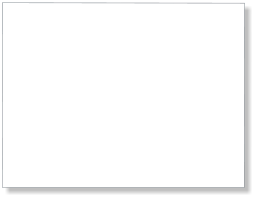 Clap your hands and sing...
Clap your hands and sing...

 © JedisParadise.com
© JedisParadise.com











 Toys & Gifts
T-Shirts
Bargain DVDs
Toys & Gifts
T-Shirts
Bargain DVDs



 Captain Pugwash Article - Puffin Annual No.1 (1974)
In Puffin Annual No.1 John Ryan was interviewed and he gave an insight into what happened
behind the scenes. The interview and the pictures are shown here.
© Penguin Books Ltd & John Ryan
Captain Pugwash Rides The Waves
John Ryan, creator of Captain Pugwash and
Sir Prancelot tells us how his stories are made
into films for the television screen.
If you think that I make cartoon programmes in the
same way as Walt Disney cartoons, you're wrong.
These kind of films are made by what is known as
'stop-frame' animation, and are very expensive and
take a long time and a lot of people. The illusion of
movement is given by showing twenty-five different
pictures every second and very large numbers of artists and technicians are involved. My method
is far simpler. Most of the work is done by three of us in my studio; and, although in terms of
movement the result may be less convincing, it is a much cheaper and quicker way of telling
stories on the television screen, and it seems to work.
This is how we do it: To begin with, each Pugwash
film has to have a story outline, known as the ‘script’:
and, of course, before I write the story I have to have
an idea. Sometimes I wake up with one, sometimes I
sit for hours thinking. And sometimes I just draw a
scene - a wild tropical jungle for example - and then try
to imagine what might happen to my characters in such
a place. I first invented Captain Pugwash over twenty
years ago, so by now I usually find it easy to work out
how and his friends and enemies will behave in
different situations.
Once the script is written, we start making the pictures. We call these ‘captions’. We need about
fifty of them for a five-minute film. First we make the characters like flat puppets. They are cut out
of card and laid on painted backgrounds. Then they are moved by cardboard levers and the whole
caption is put together with tiny brass paperclips and glue and sticky paper. We use different
coloured card and paper to save having to paint everything. I do most of the drawing, Sara Cole
adds colour to the figures and backgrounds, and Hazel Martingell cuts them out, puts them
together and makes them work. We have to work fast: it takes us a fortnight to make the captions
for one film.
Almost as important as the pictures is the sound. At the
recording studio we meet Peter Hawkins, the actor
whose ability to speak with any number of different
voices is truly amazing. Peter tells the story and speaks
the parts of all the characters into the microphone, and
it's very hard to keep a straight face as he does it
because he has a way of miming the action as well!
Then we make the sound effects, clashing table knives
for a sword fight, for example, and choose other
noises, such as explosions, from the record library. The
music is specially composed and played by Johnny
Pearson for the Pugwash series. Finally my editor
Barry Shephard mixes voices, sound effects and music onto a 16 millimetre magnetic sound track.
And he times it, so that it lasts exactly five minutes.
When we have completed the sound track and the captions (incidentally fifty of them mounted on
thick card make quite a heavy load) we set off for a small film studio in North London which
specialises in puppet animation. It is an exciting house filled with miniature film sets and puppets
of every description. Usually the experts, Bob Burn and John Hardwick, produce 'stop-frame'
animation but for Pugwash they provide lighting and a 16 millimetre camera so that we can film
our pictures at work just as actors are filmed in the making of a full-scale film.
The illustration below was actually taken with different helpers because we were making the 'Sir
Prancelot' series, but it shows how the captions are set up, with all of us gathered round the easel.
Each of us has a job to do in the animation of the
picture. Priscilla, my wife, usually looks after the levers
which control the mouth movements. Hazel operates
the tape recorder and keeps a careful log of the filming.
Thus if the first picture shows Captain Pugwash saying
'Full speed ahead, me hearties' we listen to the tape
several times while Priscilla practices the mouth
movements, Sara works the Captain's eyes and I look
after the arms and make them point in the right
direction at the right time. When we all know what to do
we film that little bit of the story. If something goes
wrong the first time we shoot it again.
We go right through the whole story, filming each scene in order and keeping a careful note of
what has happened. At the end of the day we have probably used up about 400 feet of film and
have the whole story 'in the can'. This goes off to the laboratory to be processed and comes back
two days later in the form of a colour negative (which is precious and must not be touched), and
rough prints in black and white which are known as 'rushes'.
We look at these on a screen to see if anything has gone wrong, and we retake anything that has.
For example, we have to make sure that the camera has only taken the picture itself and hasn't
'shot off to reveal the levers and even the hands of the people working them. In the colour
illustrations on the previous pages you can see the difference between the picture as you will see
it on your TV screen and the whole caption with the working parts round the edge. You will notice
too that some pictures are different shapes, some long and some larger than others. This is so
that John Hardwick our cameraman can zoom in and out on some scenes or move about over the
picture if needed.
The final stage is the editing and this takes me back to Barry (who helped to make the sound-
track in the first place). He has a special machine which enables us to play the sound on the one
side and see the picture on a miniature screen on the other. 'Editing' means choosing the best film
sequences, and cutting them into lengths so that they fit exactly to the sound-track. When all the
bits have been joined together we have what is known as a 'rough-cut' film, in black and white
which is good enough to examine and decide on any changes which might be necessary. And
when the film is finally approved in this form, the negative is cut and joined to match it and the
laboratories produce the colour print. And this is the film which, with the sound track, goes to the
BBC and will eventually be transmitted onto your television screen.
All of this may sound like a very long operation just to produce one five-minute film, but in fact it is
far quicker than other methods of animation. Even so, it will take us about ninety weeks to make
the whole series of thirty, five-minute stories. As I am writing this I have completed fourteen of my
new series. I haven't the faintest idea what the next sixteen adventures will be about, but with luck
and a certain amount of hard thinking the ideas will come. Then they will be shown on television.
We start off with nothing more than a few sheets of coloured card, watercolour paints, glue and
brass paper-clips. Three weeks later, with the help of all the skilful people I have mentioned, we
have a film. It's all a lot of fun, and if I can entertain you all and at the same time make a living out
of it I'm very happy.
Captain Pugwash Article - Puffin Annual No.1 (1974)
In Puffin Annual No.1 John Ryan was interviewed and he gave an insight into what happened
behind the scenes. The interview and the pictures are shown here.
© Penguin Books Ltd & John Ryan
Captain Pugwash Rides The Waves
John Ryan, creator of Captain Pugwash and
Sir Prancelot tells us how his stories are made
into films for the television screen.
If you think that I make cartoon programmes in the
same way as Walt Disney cartoons, you're wrong.
These kind of films are made by what is known as
'stop-frame' animation, and are very expensive and
take a long time and a lot of people. The illusion of
movement is given by showing twenty-five different
pictures every second and very large numbers of artists and technicians are involved. My method
is far simpler. Most of the work is done by three of us in my studio; and, although in terms of
movement the result may be less convincing, it is a much cheaper and quicker way of telling
stories on the television screen, and it seems to work.
This is how we do it: To begin with, each Pugwash
film has to have a story outline, known as the ‘script’:
and, of course, before I write the story I have to have
an idea. Sometimes I wake up with one, sometimes I
sit for hours thinking. And sometimes I just draw a
scene - a wild tropical jungle for example - and then try
to imagine what might happen to my characters in such
a place. I first invented Captain Pugwash over twenty
years ago, so by now I usually find it easy to work out
how and his friends and enemies will behave in
different situations.
Once the script is written, we start making the pictures. We call these ‘captions’. We need about
fifty of them for a five-minute film. First we make the characters like flat puppets. They are cut out
of card and laid on painted backgrounds. Then they are moved by cardboard levers and the whole
caption is put together with tiny brass paperclips and glue and sticky paper. We use different
coloured card and paper to save having to paint everything. I do most of the drawing, Sara Cole
adds colour to the figures and backgrounds, and Hazel Martingell cuts them out, puts them
together and makes them work. We have to work fast: it takes us a fortnight to make the captions
for one film.
Almost as important as the pictures is the sound. At the
recording studio we meet Peter Hawkins, the actor
whose ability to speak with any number of different
voices is truly amazing. Peter tells the story and speaks
the parts of all the characters into the microphone, and
it's very hard to keep a straight face as he does it
because he has a way of miming the action as well!
Then we make the sound effects, clashing table knives
for a sword fight, for example, and choose other
noises, such as explosions, from the record library. The
music is specially composed and played by Johnny
Pearson for the Pugwash series. Finally my editor
Barry Shephard mixes voices, sound effects and music onto a 16 millimetre magnetic sound track.
And he times it, so that it lasts exactly five minutes.
When we have completed the sound track and the captions (incidentally fifty of them mounted on
thick card make quite a heavy load) we set off for a small film studio in North London which
specialises in puppet animation. It is an exciting house filled with miniature film sets and puppets
of every description. Usually the experts, Bob Burn and John Hardwick, produce 'stop-frame'
animation but for Pugwash they provide lighting and a 16 millimetre camera so that we can film
our pictures at work just as actors are filmed in the making of a full-scale film.
The illustration below was actually taken with different helpers because we were making the 'Sir
Prancelot' series, but it shows how the captions are set up, with all of us gathered round the easel.
Each of us has a job to do in the animation of the
picture. Priscilla, my wife, usually looks after the levers
which control the mouth movements. Hazel operates
the tape recorder and keeps a careful log of the filming.
Thus if the first picture shows Captain Pugwash saying
'Full speed ahead, me hearties' we listen to the tape
several times while Priscilla practices the mouth
movements, Sara works the Captain's eyes and I look
after the arms and make them point in the right
direction at the right time. When we all know what to do
we film that little bit of the story. If something goes
wrong the first time we shoot it again.
We go right through the whole story, filming each scene in order and keeping a careful note of
what has happened. At the end of the day we have probably used up about 400 feet of film and
have the whole story 'in the can'. This goes off to the laboratory to be processed and comes back
two days later in the form of a colour negative (which is precious and must not be touched), and
rough prints in black and white which are known as 'rushes'.
We look at these on a screen to see if anything has gone wrong, and we retake anything that has.
For example, we have to make sure that the camera has only taken the picture itself and hasn't
'shot off to reveal the levers and even the hands of the people working them. In the colour
illustrations on the previous pages you can see the difference between the picture as you will see
it on your TV screen and the whole caption with the working parts round the edge. You will notice
too that some pictures are different shapes, some long and some larger than others. This is so
that John Hardwick our cameraman can zoom in and out on some scenes or move about over the
picture if needed.
The final stage is the editing and this takes me back to Barry (who helped to make the sound-
track in the first place). He has a special machine which enables us to play the sound on the one
side and see the picture on a miniature screen on the other. 'Editing' means choosing the best film
sequences, and cutting them into lengths so that they fit exactly to the sound-track. When all the
bits have been joined together we have what is known as a 'rough-cut' film, in black and white
which is good enough to examine and decide on any changes which might be necessary. And
when the film is finally approved in this form, the negative is cut and joined to match it and the
laboratories produce the colour print. And this is the film which, with the sound track, goes to the
BBC and will eventually be transmitted onto your television screen.
All of this may sound like a very long operation just to produce one five-minute film, but in fact it is
far quicker than other methods of animation. Even so, it will take us about ninety weeks to make
the whole series of thirty, five-minute stories. As I am writing this I have completed fourteen of my
new series. I haven't the faintest idea what the next sixteen adventures will be about, but with luck
and a certain amount of hard thinking the ideas will come. Then they will be shown on television.
We start off with nothing more than a few sheets of coloured card, watercolour paints, glue and
brass paper-clips. Three weeks later, with the help of all the skilful people I have mentioned, we
have a film. It's all a lot of fun, and if I can entertain you all and at the same time make a living out
of it I'm very happy.


 The Black Pig in port
The Black Pig in port

 Quayside: Captain Pugwash boards his ship
Quayside: Captain Pugwash boards his ship



 The Mate, anxious
The Mate, anxious

 Pirates in conference
Pirates in conference

 Cannon Practice
Cannon Practice

 Preparing for action
Preparing for action

 Cut-throat Jake comes ashore
Cut-throat Jake comes ashore

 Treasure!
Treasure!

 “Help! It’s Cut-throat Jake!”
“Help! It’s Cut-throat Jake!”

 Jake and his crew with a fit of the sneezes
Jake and his crew with a fit of the sneezes

 Pugwash and Tom in the dinghy
Pugwash and Tom in the dinghy

 Pugwash and the Sea-monster
This shows how the levers operate:
‘A’ pulls the sea through to give forward
movement.
‘B’ opens the monster’s eye,
‘C’ the monster’s mouth,
‘D’ shudders Pugwash and
‘E’ moves the whole caption up and down to
give extra movement.
Pugwash and the Sea-monster
This shows how the levers operate:
‘A’ pulls the sea through to give forward
movement.
‘B’ opens the monster’s eye,
‘C’ the monster’s mouth,
‘D’ shudders Pugwash and
‘E’ moves the whole caption up and down to
give extra movement.

 The pirates have a party
The pirates have a party

 The Captain’s breakfast, Tom in attendance
The Captain’s breakfast, Tom in attendance



 Clap your hands and sing...
Clap your hands and sing...

 © JedisParadise.com
© JedisParadise.com











 Toys & Gifts
T-Shirts
Bargain DVDs
Toys & Gifts
T-Shirts
Bargain DVDs









